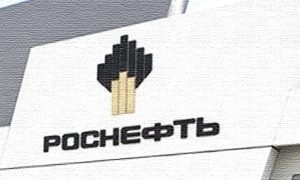
Sovereign Wealth Brothers Patiently Wait as Qatar Investment Authority Loses Big on Rosneft Holding
Posted on 03/05/2022
Russian oil and gas giants on the London Stock Exchange have witnessed their stock prices crater following the Russian invasion of Ukraine. At the most recent consequential time in Eastern Europe, the U.S. Treasury increased the number of sanctions on Russia, even putting blocks around Russia’s central bank.
Before Russia’s annexation of Crimea in 2014, the Russian Direct Investment Fund (RDIF), the country’s strategic development sovereign wealth fund (SDSWF), paved the way for institutional investors to access Russian developments and investments. RDIF formed a number of bilateral funds with nations such as United Arab Emirates, Saudi Arabia, Kuwait, Bahrain, Italy, France, India, China, and Japan. The China Investment Corporation (CIC) and RDIF created the US$ 2 billion Russia-China Investment Fund. Other bilateral investment funds propped up like the Russia-Japan Investment Fund (with Japan Bank for International Cooperation). RDIF also constructed inroads with Italy and France. RDIF and Fondo Strategico Italiano (FSI) earlier formed a €1 billion Russian-Italian investment platform. Similarly, RDIF and Caisse des Depots International (CDC International) formed the Russia-France Investment Platform.
Sovereign Wealth Funds
Sovereign wealth funds are long-term institutional investors, usually able to wait out scandals, economic events, and even global pandemics. According to transaction data from the Sovereign Wealth Fund Institute (SWFI), Gulf-based sovereign funds are the largest cohort sovereign wealth investor group in Russia, followed by Asian sovereign wealth funds. Gulf sovereign wealth funds have been hit book-wise on their investment holdings in Russia. Since the Russian invasion of Ukraine started, Russian stocks have fallen due to increased sanctions from the U.S. and Europe. Shares in Rosneft, Gazprom, Lukoil, and Surgutneftegas plummeted on the London market, losing as much as US$ 190 billion of their combined market capitalization, or 95 percent. Rosneft is Russia’s biggest oil producer. The Qatar Investment Authority (QIA) is an institutional investor in Russia, opting for strategic deals. QIA got a 4.5% stake in Rosneft back then. In 2018, QHG Oil Ventures sold a 14.2% stake in Rosneft for €7.4 billion (US$ 8.4 billion) to QIA. This boosted QIA’s ownership in Rosneft to around 19%. Earlier, Qatar felt isolation too. Qatar was stuck in an economic boycott imposed by Saudi Arabia, United Arab Emirates, Bahrain, and Egypt, which severed diplomatic and transport ties with Doha in 2017, accusing it of supporting terrorism.
Abu Dhabi-based Mubadala Investment Company has transacted around US$ 6 billion in investments in Russia and has 45 plus investments in the country from 2013 to 2022. Before the invasion, Mubadala made an investment in PJSC SIBUR Holding and En+ Group International PJSC. En+ Group has a controlling stake in Rusal, one of the largest producer of aluminium in the world and the largest outside of China. Mubadala has a satellite office in Russia as well as having a US$ 2 billion co-investment vehicle with RDIF. Additionally Mubadala manages US$ 5 billion commitment from Abu Dhabi Department of Finance to invest in Russian infrastructure projects. Saudi Arabia’s Public Investment Fund (PIF) has exposure to some Russian investments, as well as the Kuwait Investment Authority, Abu Dhabi Investment Authority, and Mumtalakat Holdings. PIF invested US$ 10 billion to a partnership managed by the RDIF to invest in projects in Russia, in areas including infrastructure and agriculture.
Middle Eastern sovereign wealth funds are well familiar with wars, economic crises, and other such events. They also understand the influence of a Russky Mir, a Russian World, in their hemisphere and the importance of trade. The Middle East needs secure access to wheat and other forms of agriculture to feed a growing population.

